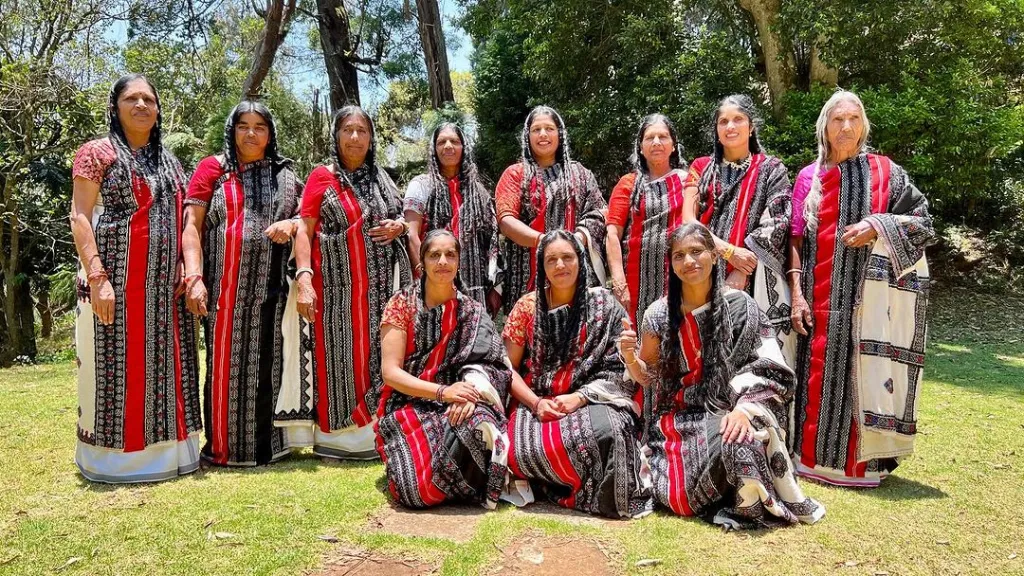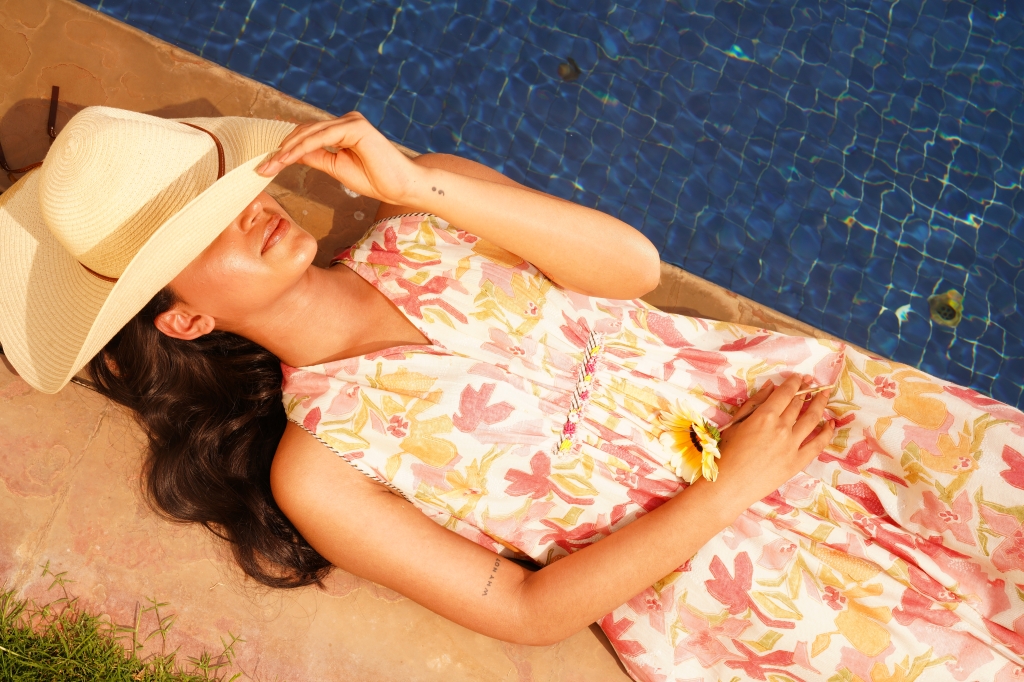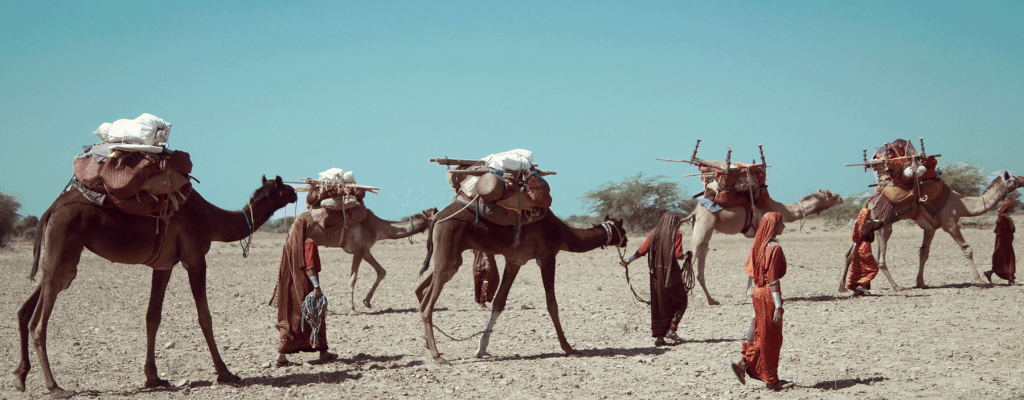In 1856, a 14-year old William Henry Perkin invented aniline purple or Mauve, while trying to synthesize Quinine from chemicals derived from coal tar. His little accident created a whole new industry of chemical dyes and put natural dyeing, one of mankind’s great achievements, on the list of endangered arts.
Indigo blue, Tyrean purple, Madder red and a vast range of other colors derived from plants, sea shells, insects and minerals were once called the Royal Colors because only the royals and the very rich could afford them. Indigo, grown famously in India was the only exception as it was cultivated and turned into a dye for use on fabric on a large scale and used by many. India’s printed fabrics like Ajrakh and bandhani – a tie-and-dye technique from India – used natural dyes for the longest time and bore the brunt of being expensive alternatives to chemical dyeing, which could be produced faster and more cost effectively.
Jabbar Bhai Khatri, a celebrated Ajrakh artisan from Gujarat says, “Chemical dyes came into circulation between 1945 and 1950 and chemically printed Ajrakh became such a rage for its low-cost that my grandfather whose ancestors had been Ajrakh artisans using natural dyes for ages, was forced to turn to chemicals. It was that or no business at all.” Stories from Rajasthan’s tie-and-dye artisans who made the mesmerizing leheriya are similar.
Clockwise from top left: Bandhani dyeing process; Jabbar Bhai Khatri of Dhamadka; bandhani dyed fabric with colored dots; washing Ajrakh dyes; clamp dyeing
But there is beautiful change happening all around and designers and textile revivalists are returning to natural dyes like Kashish and Madder red in a big way. In fact, some like designer and scholar Bina Rao, have been working on researching natural dyes and experimenting with new dyestuffs for more than two decades on her natural dye farm. “India has a natural advantage in organic dyeing and we are making natural colors in the entire spectrum from Madder red to Thai purple,” she tells us, adding, “India was one of the largest and most important centers of natural dyeing in the pre-industrialization world and today we not only have a huge knowledge base but also immense natural resources, lands to grow the dye-plants on and a culture of natural dyeing. These positives put us in a good place in the natural dyeing sector and today India is producing large quantities of organic dyes not just for use in the domestic market but also for export to other countries.”
Clockwise from top left: A dye vat; an indigo dyer at work; dried pomegranate peels for the typical Ajrakh yellow; woolen yarn being dyed; indigo-dyed fabric; dyed yarn drying in the sun
Other than the very recognizable Indigo and Madder dyes, India is also seeing a lot of innovation in natural dyeing and designers are using new organic materials to make dyestuffs. Natural dyers are coaxing a beautiful green out of raw Pomegranate rinds, using sawdust from the Jackfruit tree for making a delicate yellow, extracting grey or Kashish from shells and the Arjun tree bark and employing the kitchen staple, the onion, to give off a range of earthy browns and reds.
Avani, a community based organization working in the Kumaon region the Himalayas, works with small farmers in the area to not just grow various dye plants but also acts as a market linkage to sell the final product made using these dyes. Rashmi Bharti of Avani tells us, “The natural dyeing industry works as a chain of farmers who grow the dye, the rangrez or the dyer who dyes the yarns and the weaver who makes the fabric using these yarns and sells them in the market. At one time, all these activities were carried out in the village or a specific region and that was the ecosystem. Now, all the links in this chain have been flung apart and a central point is required to hold them together and ensure the craft is still sustainable for it to flourish.”
Avani not just works with the artisans for making natural dyed textiles, but has also produced innovative new products like pure beeswax crayons, wood-stains and tubed water colors, all using natural dyes to give a new boost to this beautiful craft.
Crayons made with natural dyes
Content by Jaypore; Images via Neelgar, Avani, Jabbar Bhai Khatri, Peoli, Soul Roots and Upasana. Cover image by Creative Bee.

















Leave a comment